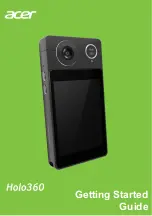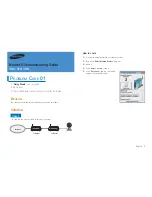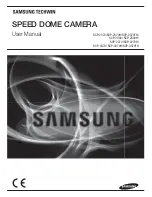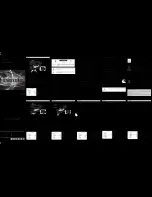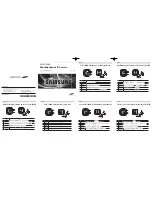
84
REFERENCE MATERIAL
INFORMATION ABOUT THE OPTICAL RADIATION HAZARD TO THE USER
Relative spectral output of this instrument
Photochemical light source radiance of this instrument
L
A
(without crystalline lens)
: 0.48 mW/ (cm
2
·sr)
L
B
(with crystalline lens)
: 0.45 mW/ (cm
2
·sr)
Meaning of L
A
and L
B
•
Spectrally weighted photochemical radiances L
B
and L
A
give a measure of the potential that
exists for a beam of light to cause photochemical hazard to the retina. L
B
gives the measure for
eyes in which the crystalline lens is in place. L
A
gives this measure either for eyes in which the
crystalline lens has been removed (aphakes) and has not been replaced by a UV-blocking lens
or for eyes of very young children.
•
The value stated for TRC-NW8 gives a measure of hazard potential when the instrument is
operated at maximum intensity and maximum aperture. Values of L
B
or L
A
over 80mW/ (cm
2
·sr)
are considered high for beams which wholly fill a dilated pupil.
•
Because prolonged intense light exposure can damage the retina, the use of the device for ocu-
lar examination should not be unnecessarily prolonged, and the brightness setting should not
exceed what is needed to provide clear visualization of the target structures. This device should
be used with filter that eliminate UV radiation (<400 nm) and, whenever possible, filters that
eliminate short-wavelength blue light (<420 nm).
•
The retinal exposure dose for a photochemical hazard is a product of the radiance and the expo-
sure time. If the value of radiance were reduced in half, twice the time would be needed to reach
the maximum exposure limit.
•
While no acute optical radiation hazards have been identified for fundus cameras, it is recom-
mended that the intensity of light directed into the patient's eye be limited to the minimum level
which is necessary for diagnosis. Infants, aphakes and persons with diseased eyes will be at
greater risk. The risk may also be increased if the person being examined has had any exposure
with the same instrument or any other opthalmic instrument using a visible light source during
the previous 24 hours.This will apply particularly if the eye has been exposed to retinal photogra-
phy.
TRC-NW8 Observation Light
300
400
500
600
700
800
900
1000
1100
Wavelength [nm]
Relative radiance
Halogen


















